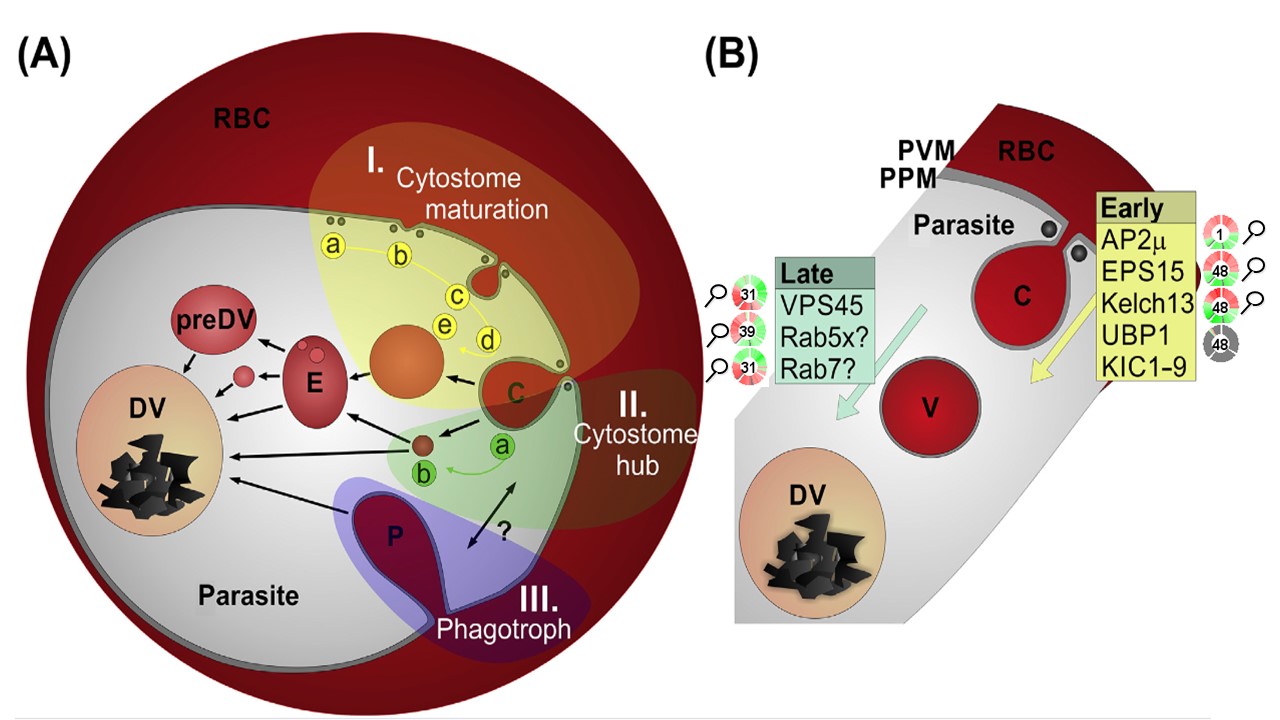Structures and Proteins in Host Cell Cytosol Uptake (HCCU).(A) A red blood cell (RBC) infected with a Plasmodium falciparum parasite showing different possible routes of HCCU. Routes I and II involve the cytostome (C), either as a de novo-formed structure, and pinching off of the entire cytostome (I, a–e), or as permanent structure (II, a,b). These possibilities are not mutually exclusive. III shows a phagotroph which could be a surface enlargement of the parasite without a function in endocytosis, an autonomous HCCU structure with similar options for delivery of HCC to the digestive vacuole (DV) as the cytostome, or a particular state of the cytostomal cycle (double-headed arrow with question mark). E, endosomal compartment; preDV, HCC-filled structure observed near the DV that might correspond to a compartment upstream of the DV. Arrows indicate possible transport routes that all are hypothetical. (B) Proteins known or suspected (indicated by question marks)to be involved in HCCU. Note that KIC1–9 signify proteins colocalizing with Kelch13, but only KIC7 has been experimentally shown to be involved in HCCU. Rab5xstands for Rab5b or Rab5c. Abbreviations: PPM, parasite plasma membrane; PVM, parasitophorous vacuolar membrane; V, HCC-containing vesicle. Spielmann T, Gras S, Sabitzki R, Meissner M. Endocytosis in Plasmodium and Toxoplasma Parasites. Trends Parasitol. 2020 36(6):520-532.
PubMed Article: Endocytosis in Plasmodium and Toxoplasma Parasites
